 I've had several patients come and see me for stomach pains and acid reflux. These are problems often dealt with by medical doctors and managed by medication. But do those medications get to the cause of the problem? In these cases, the answer was definitively "no!" 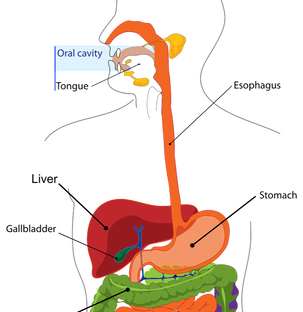 The problem is where the esophagus meets the stomach. The problem is where the esophagus meets the stomach. I successfully treated all of these cases with something called Chiropractic Manipulative Reflex Technique (CMRT). It's an advanced part of Sacro Occipital Technic® (SOT®). CMRT involves soft tissue work on the body. Food moves into the stomach through the diaphragmatic sphincter. Like the other sphincter we all know and love, it should properly open and close to function. When it doesn't do that, stomach acid can pass backwards into the esophagus causing what is called acid reflux. In both of these cases, the diaphragm was under tension and was affecting the diaphragmatic sphincter. Part of fixing the cause was to pull the stomach away, since it was also pushed up under the diaphragm. The psoas muscle also connects at common points with the diaphragm. When the psoas muscle shortens or tightens, it pulls on the diaphragm. The psoas muscle also is involved with low back problems and this is why acid reflux and low back issues can go together. Both these cases also had subluxation of the 5th thoracic vertebra (T5). T5 has connections with the stomach (gastric) reflex, which influences acid production. As part of CMRT, I did reflex work on this area too.  Antacids let bad bacteria grow where they shouldn't. Eww. Antacids let bad bacteria grow where they shouldn't. Eww. These cases resolved relatively quickly: an inexpensive fix to what can be a very costly problem. Antacids lower the pH in your stomach. This can allow for bad bacteria to grow in your digestive tract that aren't supposed to. Yuck! If you are experiencing acid reflux, please give me a call. I can tell you after an initial exam if you have this problem causing your reflux. If not, I can help develop a plan to figure out what other problems could be causing the pain.
8 Comments
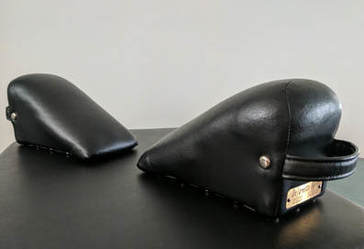 SOT® blocks allow for gentle and effective management of sciatica symptoms. SOT® blocks allow for gentle and effective management of sciatica symptoms. There are several chiropractic techniques I use to treat sciatica, based on patient needs. Sacro-Occipital Technic® (SOT®) is unique in the usage of wedge-shaped blocks under the pelvis. People with sciatica are in acute pain, and the blocks help guide the body back into balance and stop the pain. Blocks are especially effective at getting rid of the "antalgic lean" or lean to one side that people with sciatica develop. 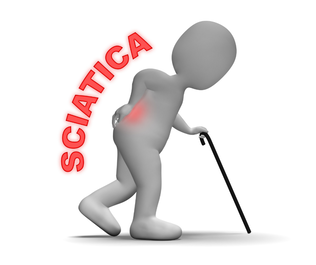 SOT® also deals with the soft tissue components of sciatica, including the piriformis muscle. As described in my other blog entry on sciatica, the muscle can either be too tight or too loose. Either way it can affect the sciatic nerve leading to pain. Even if the vertebra or disc is causing the sciatica, people with sciatica will usually have some involvement of the piriformis muscle that needs to be addressed to resolve the problem. The psoas muscle is also involved in sciatica. The psoas muscle attaches to the intervertebral discs themselves. Getting the psoas muscle to relax is an important part of sciatica treatment. 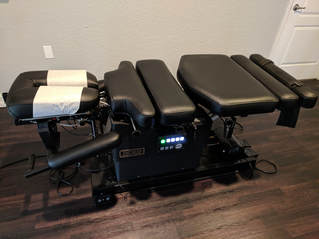 The special table in my office that allows me to do Cox Technic® flexion/distraction. The special table in my office that allows me to do Cox Technic® flexion/distraction. The other way I treat sciatica is with Cox Technic®. This is another low force method I use in my office. It helps open up the disc space and increase mobility in the lumbar spine. Research shows that Cox Technic® reduces pressure in the disc, reduces pressure on spinal nerves, and widens the spinal canal foraminal area. Cox Technic® even works on cases of failed low back surgery! Yes, even if you have had surgery and are still suffering, research shows that Cox Technic® may be able to help. And it helps with problems in the cervical spine (neck). Both SOT® and Cox Technic® are gentle forms of working on the spine. This is in contrast to traditional "popping and cracking" done by more traditional forms of chiropractic. Want to know more or schedule an appointment? Please contact my office 727-509-3760, email [email protected] or book online. 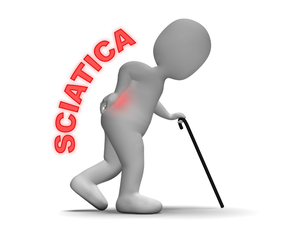 What is sciatica? Sciatica means you have pain along some part of the sciatic nerve. The sciatic nerve is the longest nerve in the body, coming out of the lumbar and sacral parts of the spine. It travels through the buttock and down the back of the leg into the heel and foot (technically it gets some other names down there, but it's all part of the same big bad nerve). What isn't sciatica? Some patients will tell me they have sciatica, but then point to part of there leg that isn't related to the sciatic nerve. Leg pain doesn't necessarily mean sciatica. If the pain is on the side front, or doesn't go below the knee, it might not be the sciatic nerve. Those are often sacroiliac joint issues. What causes sciatica? The sciatic nerve exits out of the lumbar spine. It can get irritated by abnormalities there including
BUT...it can also be aggrevated by the PIRIFORMIS MUSCLE. In layman's terms, that's a muscle in your butt and the sciatic nerve passes right under it (in most people). The piriformis muscle can either become too tight or too loose and that will trap the nerve creating the pain. For a small number of people the nerve passes through the muscle.  A word about discs When MRI's first came out a lot of low back pain and sciatica was blamed on the disc. There was a study done in the 1990's showing that people without back pain and without sciatica have abnormal discs. In other words, just because you have an abnormal disc doesn't necessarily mean that's what's causing your sciatica. Nor does it mean that you have to have surgery. I have a very high success rate of treating sciatica (or what patients initially thought was sciatica) in my practice. If you do need another type of healthcare provider, I will refer you to someone else. Look for part 2 of my blog on sciatica and the unique ways I treat it. |
AuthorI'm a Chiropractic Physician, Psychotherapist and researcher. I'm interested in helping people live their lives to their full potential. That could be simply without pain. Or it could be without more complicated physical or mental health problems. Or it could be getting help in making changes in their life so that they can achieve their dreams. Archives
June 2023
Categories |
 RSS Feed
RSS Feed